Bell’s Palsy
Bell’s palsy is a disorder that results in a sudden weakening of one side of the face’s muscles. Usually, the weakness is temporary and gets better over a few weeks. The weakening gives the face a drooping appearance on half of it. It’s possible that you won’t be able to close your eyes or that your smile may be uneven.
Another name for Bell’s palsy is acute peripheral facial palsy of unknown cause. It is possible at any age. The specific cause is unknown. Swelling and irritation of the nerve that regulates the muscles on one side of the face are considered to be the primary causes. A reaction following a viral infection may be what causes Bell’s palsy.
The majority of the time, full recovery occurs in around six months, and symptoms improve in a few weeks. A small percentage of people develop lifelong symptoms of Bell’s palsy.
What is The Facial Nerve?
The facial nerve serves as a path between your brain and specific facial muscles. It regulates the muscles that enable you to make facial expressions like frowning, smiling, and raising an eyebrow. The majority of the taste sensations on your tongue are also received by this nerve.
What is the anatomy of the Facial Nerve?
In your neurological system, the seventh cranial nerve is the facial nerve. There are two facial nerves in your head, one on each side. The nerve in the face:
- Begins in the brainstem.
- Passes through the base of your skull close to the eighth cranial nerve, the vestibulocochlear nerve, which aids in hearing and balance.
- Enters your face via a bone aperture close to the base of your ear.
- It branches off through a hole next to your parotid gland, an important salivary gland.
What are the Facial Nerve branches?
Five branches of the face nerve carry out different motor functions:
- Frontal (temporal): Regulates the muscles in your forehead.
- Zygomatic: Helps with eye closure.
- Buccal: Makes it possible for you to smile by lifting the corners of your lips and your upper lip while also moving your nose and blinking.
- Marginal mandibular: To help you react to loud noises, it pulls your lower lip down (like a frown) and passes into your middle ear.
- Cervical: Regulates the mobility of your mouth’s lower corners and chin.
What is the function of the Facial Nerve?
These sensory and motor functions are carried out by the facial nerve:
- Regulates the muscles responsible for creating your facial expressions.
- Regulate the inner ear muscle which is responsible for regulating sound intensity.
- Helps to release tears.
- Transmits taste information from your tongue to your brain.
What is Bell’s Palsy?
- Bell’s palsy is a disorder that results in temporary facial paralysis. Usually, it only affects the facial muscles on one side. You might not be able to close an eyelid or have an uneven smile completely. It rarely damages your face on both sides.
- Bell’s palsy is caused by swelling and inflammation of the seventh cranial nerve, which regulates the muscles in your face. While some illnesses, like viral infections, can induce inflammation, many occurrences of Bell’s palsy are idiopathic, meaning they have no known cause.
- Any age can be affected by Bell’s palsy. However, those between the ages of 15 and 60 are the most likely to be affected. 40 years old is the typical onset age.
- The 19th-century Scottish surgeon Sir Charles Bell is credited with giving the disorder its name.
What are the causes of Bell’s palsy?
Bell’s palsy is primarily caused by inflammation and compression of your seventh cranial nerve. The nerve signals that regulate your facial expressions and movements are transmitted by the seventh cranial nerve. It also transmits nerve signals which is important in taste and eye tear production. Each of these two nerves regulates one side of your face. The muscles on one side of your face become less mobile when inflamed. Researchers have discovered that Bell’s palsy may be caused by specific viral infections that inflame the seventh cranial nerve.
A few of these are :
- Herpes simplex 1 (a virus that causes cold sores and other oral illnesses).
- The varicella-zoster virus causes shingles and chickenpox.
- The Epstein-Barr virus causes mononucleosis.
- COVID-19.
Additional factors could be due to immune system weakness caused by
- Stress
- Diseases.
- Lack of sleep.
- Physical injury.
- Autoimmune disorders.
- Generally, doctors cannot identify a specific cause of Bell’s palsy.
What signs and symptoms are present with Bell’s palsy?
The main sign of Bell’s palsy is facial muscle paralysis, usually affecting one side of the face. It appears to be drooping on one side of your face. Among them are:
- The foreheads.
- Eyebrow.
- The eye and eyelid.
- Corner of your mouth.
Bell’s palsy symptoms typically start suddenly and peak in severity in 48 to 72 hours. Others experience moderate facial muscular weakness. Some people have complete facial muscular paralysis.
Bell’s palsy makes it difficult to produce complete expressions. On the affected side, raising your eyebrows, blinking, or making other facial expressions could be difficult or impossible. You can experience a heavy or numb face. But on the affected side of your face, you can still feel touch and temperature (such as heat and cooling).
Additional signs of Bell’s palsy could be:
- Drooling.
- Dry eyes.
- Speaking, eating, or drinking difficulties.
- Pain in the ears or face.
- Headache.
- Taste loss.
- Tinnitus (Feeling of ringing in the ears is called tinnitus).
- Hyperacusis (Hearing sensitivity).
Are there any warning signs of Bell’s palsy?
Bell’s palsy warning signs, or early symptoms, can include mild fever and soreness behind your ears. But once Bell’s palsy starts, there’s little you can do to stop it from developing. Furthermore, you can experience similar symptoms for some other reason without developing Bell’s palsy.
How common is Bell’s palsy?
Bell’s palsy occurs frequently. Every year, between 15 and 30 persons out of 100,000 are affected. It will affect 1 in 60 persons at some time in their lives. It is the predominant etiology of unilateral facial paralysis.
Which conditions are at risk for Bell’s palsy?
Having any of the following could make you more susceptible to Bell’s palsy:
- Diabetes.
- Pregnancy.
- Pre-eclampsia.
- Obesity (BMI of 30 or above).
- High blood pressure (hypertension).
- Previously experienced Bell’s palsy.
What is the diagnosis of Bell’s palsy?
Based on your symptoms, a doctor can diagnose Bell’s palsy. Your symptoms and whether they have changed will be questioned. Furthermore, a physical examination may be conducted and you may be asked to perform certain muscle movements on your face. The primary physical examination finding for Bell’s palsy is either whole or partial forehead weakness.
Similar facial paralysis to Bell’s palsy can occasionally be caused by other disorders such as stroke, sarcoidosis, Lyme disease, middle ear bacterial infections, multiple sclerosis, and tumors close to your facial nerve. Your doctor typically diagnoses Bell’s palsy correctly based only on your medical history and physical examination. However, occasionally they might advise getting one or more of these tests done:
- Blood tests to look for diseases like sarcoidosis or Lyme disease.
- Electromyography (EMG) for assessing nerve injury and activity. Your doctor may be able to determine how quickly you heal from this test.
- Computed tomography (CT) or magnetic resonance imaging (MRI) scans can rule out multiple sclerosis, stroke, tumors, and other causes of nerve injury.
- Spinal taps, or lumbar punctures, are used to screen for sarcoidosis, meningitis, and Lyme disease.
What are the treatments for Bell’s palsy?
Bell’s palsy improves on its own in the majority of instances. However, for symptom relief and a quicker recovery, your healthcare professional can suggest one or more of these treatments:
Eye care: Artificial tears and other eye drops are used to relieve dry, irritated eyes. You might need to use an eye patch to shield that eye from injuries, dryness, and irritants if your eyelid won’t close. Taking good care of your eyes is crucial to avoiding corneal damage, which is a major side effect of Bell’s palsy.
Medications: Your doctor might prescribe medications including these:
- Corticosteroid medications: these reduce inflammation.
- Antiviral or antibacterial medications: these treat infections or viruses that may be the cause of your Bell’s palsy.
- Over-the-counter painkillers: these include acetaminophen and ibuprofen.
- Eye drops: these keep the affected eye lubricated.
How to manage Bell’s palsy?
Other measures can you take to manage Bell’s palsy to go away, aside from taking your medication is:
- During the day, use artificial tears or eye drops. Exposure keratitis, another name for severe dry eye, can occur if your eyelid is unable to close all the way or if you are unable to blink it. If you don’t get treatment, your cornea could get damaged. You can get more detailed instructions on how often to take the drops each day from your eye doctor. Use preservative-free lubricating eye drops, which won’t irritate your eyes, if you must use them more than four times a day.
- At night, apply a thick lubricating ointment to your eye. While you sleep, this type of thicker ointment will keep moisture from running through your eyes, but it may cause cloudy vision. Apply just before turning in for the night.
- Cover the affected eye with tape at night. When you go to bed, apply surgical tape to shut your eyelid to avoid drying it out over the night. When you wake up, remove the tape gently to avoid damaging your eyelid or surrounding skin.
- Consider wearing an eye patch. To stop moisture loss and avoid dry eyes, some specialists advise covering your eye with a patch or moisture chamber.
- Make use of a straw. Drinking from a glass can be challenging at times if your mouth is drooping. Try using a straw to lessen the chance of dropping liquids down your chin, such as water.
- Speak with someone. Talking to a trusted friend or even a counselor or therapist about your feelings is a good idea if you’re feeling self-conscious about the way you look.
- Consider other forms of treatment. Although they won’t eliminate your Bell’s palsy symptoms, complementary therapies may make you feel better. For instance, think about using your preferred method of relaxation or other stress-reduction tactic.
- Try your best to gain as much sleep as you can. It might be difficult to adjust to the changes that come with facial paralysis. Make an effort to obtain as much rest as you can, get lots of sleep, and concentrate on eating a healthy, balanced diet.
Physical therapy: Muscles that are paralyzed may shorten and weaken permanently. You can avoid this by learning how to massage and train your facial muscles from a physical therapist.
Surgery
- Nerve decompression surgery: In the past, the bony channel that the facial nerve travels through was opened during decompression surgery to release pressure on the nerve. Decompression surgery is not advised today. Possible dangers of this operation include irreversible hearing loss and harm to the facial nerve.
- Plastic surgery: In rare cases, long-term facial nerve issues may require plastic surgery to manage. Surgery for facial reanimation can restore facial movement and help the face appear more even. Facial implants, nerve grafts, eyelid lifts, and eyebrow lifts are a few examples of this kind of surgery. After a few years, some surgeries, like an eyebrow lift, might need to be redone.
Physical-Therapy for Bell’s palsy
Physical therapy is suggested. Your physical therapist will show you a selection of facial exercises that will help you strengthen your face’s muscles and increase their range of motion. Numerous cases of Bell’s palsy have also shown success with physical therapy treatments.
Exercises for Bell’s Palsy Patients
Bell’s palsy patients can regain facial coordination and muscular power by engaging in facial exercises and physical therapy after experiencing a brief period of facial paralysis. The majority of exercises should be performed in brief sessions three or four times a day, with a maximum of thirty repetitions for each exercise.
Facial Stimulation
It’s crucial to warm up and activate your muscles before starting the facial workouts. Experts advise sitting in front of a mirror so that you can see your face and observe your muscle movements when performing these facial exercises appropriately.
- Try moving every portion of your face slowly and softly to start.
- Raise your eyebrows slightly with your fingers. Although one side will rise higher than the other, the drooping side shouldn’t be very forceful.
- Massage your forehead, nose, cheeks, and mouth with your fingertips in a gentle manner.
Eye Blinking Exercise: Using your fingers, gently close and open the inflamed eye as needed. Try to blink completely and as quickly as is comfortable and within control.
Exercise Your Smile: Try to draw the affected side of your mouth’s corner upward with your fingertips in a gentle smile. After a few moments of maintaining the position, release. Repeat several times.
Exercise to Raise Your Eyebrows: Try to lift the affected side of the eyebrow by placing your fingers above it. Try to raise the eyebrow by gently applying resistance with your fingertips. After a brief period of holding, release. Repeat several times.
Eye Closure Resistance Exercise: Gently close the injured eyelid and apply pressure with your palm to the closed eyelid. After a few seconds of holding, let go of the pressure. Repeat many times.
Exercise for Cheek Puffs: On the side that is affected, puff up your cheeks and hold it for a few seconds. Next, relax and perform the puffing motion a few more times.
Exercise for Tongue and Lip Mobility: Move your tongue up, down, and side to side within your mouth gently. Make an effort to contact your tongue to the corners of your mouth. Additionally, to encourage flexibility, move your lips in different directions.
Keep in mind that you should perform these exercises lightly and without exhausting yourself. You can progressively increase the repetitions and intensity as your facial muscles regain coordination and strength over time.
Biofeedback: To assist patients in visualizing and monitoring their muscular movements, several physical therapy treatments make use of biofeedback. This can help with learning how to coordinate and activate your muscles correctly for more expressive facial expressions.
Manual Massage: Massage therapy can be used in addition to other forms of medical treatment. Enhancing one’s perception abilities is feasible. Facial massage techniques include:
- Effleurage.
- Kneading using thumb or finger.
- Hacking.
- Tapping.
- Stroking.
Additional therapy options include
- Applying moist heat to the paralyzed area to help with relief from pain.
- Try drinking through a straw.
- Consume food with the side of your mouth that is most comfortable.
Electrical Stimulation: Electrical stimulation is another technique used in physical therapy treatments. You will need to see a physical therapist for electrical stimulation, unlike with face exercises, which you mostly do at home.
Small amounts of electricity are used in electrical stimulation to cause your face’s muscles to contract. The sensation of electrical impulses from your brain causing your muscles to twitch is caused by this. This can be your only option to use these facial muscles when your face is at its most paralyzed, during the last stages of Bell’s palsy.
What are the complications for Bell’s Palsy?
The majority of Bell’s palsy patients recover fully and without any issues after experiencing an episode. On the other hand, Bell’s palsy in more severe forms may result in complications. Among them are the following:
- Damage to your face nerve that cannot be repaired.
- Irregular nerve fiber regeneration. When attempting to move other muscles, this may cause an involuntary contraction of some muscles, a condition known as synkinesis. For instance, the affected eye may close when you smile.
- Partial or total blindness caused by an unresponsive eye. The cornea, the transparent layer that covers the eye’s protective layer, is scratched and overly dry.
The prognosis for Bell’s Palsy
- For those who have Bell’s palsy, the prognosis is typically favorable. Depending on how severe the nerve injury is, recovery times can change. After two to three weeks from the beginning of symptoms, you might start to see an improvement if the nerve damage is not too severe. It can take three to six months to see any recovery if the nerve damage is more severe. Rarely, the symptoms might not go away or might come back permanently.
- If you experience any Bell’s palsy symptoms, give your doctor a call right once. Early intervention can reduce healing time and avoid problems.
Prevention for Bell’s palsy
- As for Bell’s palsy, there is nothing you can do to prevent it.
- Although there is an interaction, Bell’s palsy does not always result from those viral infections.
- Taking good care of your risk factors, such as diabetes, obesity, or high blood pressure, may help lower your chance of developing the illness.
Summary
Bell’s palsy can cause you to feel self-conscious about the way your face appears. Fortunately, these symptoms typically get better with time. From the moment you begin experiencing symptoms, speak with your doctor. If corticosteroid therapies are initiated within 48 hours after symptom onset, they can speed up the healing process. Additionally, other, more serious illnesses that cause facial paralysis can be ruled out by your doctor.
FAQs
What Is Bell’s Palsy’s Primary Cause?
Bell’s palsy is mostly caused by inflammation or compression of the facial nerve, which is frequently caused by viral infections, especially those caused by the herpes simplex virus.
Is Bell’s palsy curable?
The majority of Bell’s palsy cases are temporary. You’ll probably regain full use of your usual facial muscles after some time. About 80% of cases are like this. For some, however, facial weakness may not go away.
What is the duration of Bell’s palsy symptoms?
The majority of the time, full recovery occurs in around six months, and symptoms improve in a few weeks. A small percentage of people develop lifelong symptoms of Bell’s palsy. Bell’s palsy rarely happens more than once.
Is Bell’s palsy a stroke?
The difference between a stroke and Bell’s palsy: “Bell’s palsy resembles the symptoms of a stroke because it affects only one nerve, the facial nerve.” Bell’s palsy is associated with injury to the facial nerve, whereas a stroke is caused by a blood clot that obstructs blood flow to the brain or by a blood vessel that bursts inside the brain.
What should be avoided in Bell’s palsy?
Stay away from foods that are stringy, chewy, or have husks, skins, pips, or shells (such as raw tomatoes, lettuce, chewy meats, sweet corn, peas, or baked beans). Rice and other dry, crumbly meals may be difficult for you to eat and may make you cough.
What is the quickest way for Bell’s palsy patients to recover?
Due to their anti-inflammatory properties, corticosteroids may aid in the treatment of Bell’s palsy. Studies have shown that corticosteroids can speed up and improve the full recovery process for Bell’s palsy patients.
What is the best way to sleep with Bell’s palsy?
Bell’s palsy may result in drooping of the lower eyelid and dry eyes. If you find it difficult to close your eye entirely, you might want to attempt taping it closed with clear medical tape while you sleep. To protect your eyes from dust and debris, put on goggles or glasses.
References
- Bell’s Palsy. (2023, March 8). Johns Hopkins Medicine. https://www.hopkinsmedicine.org/health/conditions-and-diseases/bells-palsy
- Professional, C. C. M. (n.d.-b). Bell’s Palsy. Cleveland Clinic. https://my.clevelandclinic.org/health/diseases/5457-bells-palsy
- Bell’s Palsy. (n.d.). National Institute of Neurological Disorders and Stroke. https://www.ninds.nih.gov/health-information/disorders/bells-palsy
- Kahn, A. (2023, April 26). What is Bell’s Palsy? Healthline. https://www.healthline.com/health/bells-palsy#summary
- Brazier, Y. (2023, April 21). What to know about Bell’s palsy. https://www.medicalnewstoday.com/articles/158863#what-is-bells-palsy
- Healthdirect Australia. (2022, August 25). Bell’s palsy. Causes, Symptoms, and Treatments | Healthdirect. https://www.healthdirect.gov.au/bells-palsy
- What is Bell’s Palsy? (2023, May 2). American Academy of Ophthalmology. https://www.aao.org/eye-health/diseases/bells-palsy
- WebMD Editorial Contributors. (2022, November 6). Best exercises for Bell’s Palsy. WebMD. https://www.webmd.com/brain/best-exercises-bells-palsy
- Clinic, M. R. (2023, August 31). Physical therapy for Bell’s Palsy: Techniques and exercises. Miracle Rehab Clinic. https://www.miraclerehabclinic.com/blog/physical-therapy-for-bells-palsy

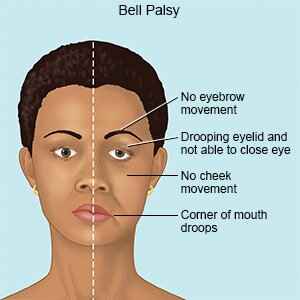
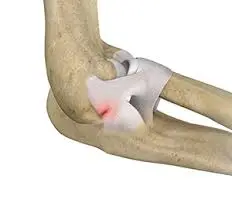

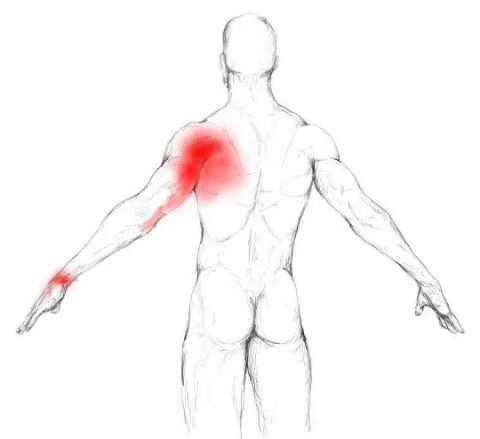
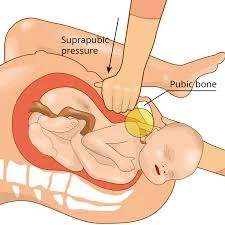
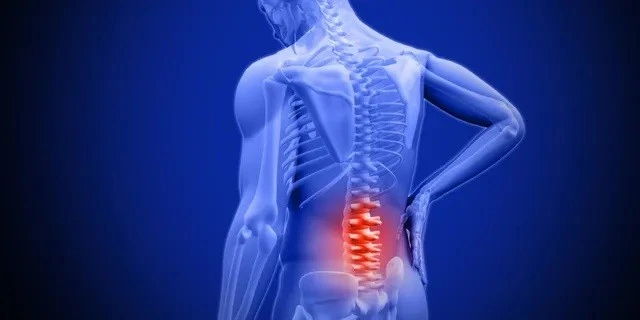

2 Comments